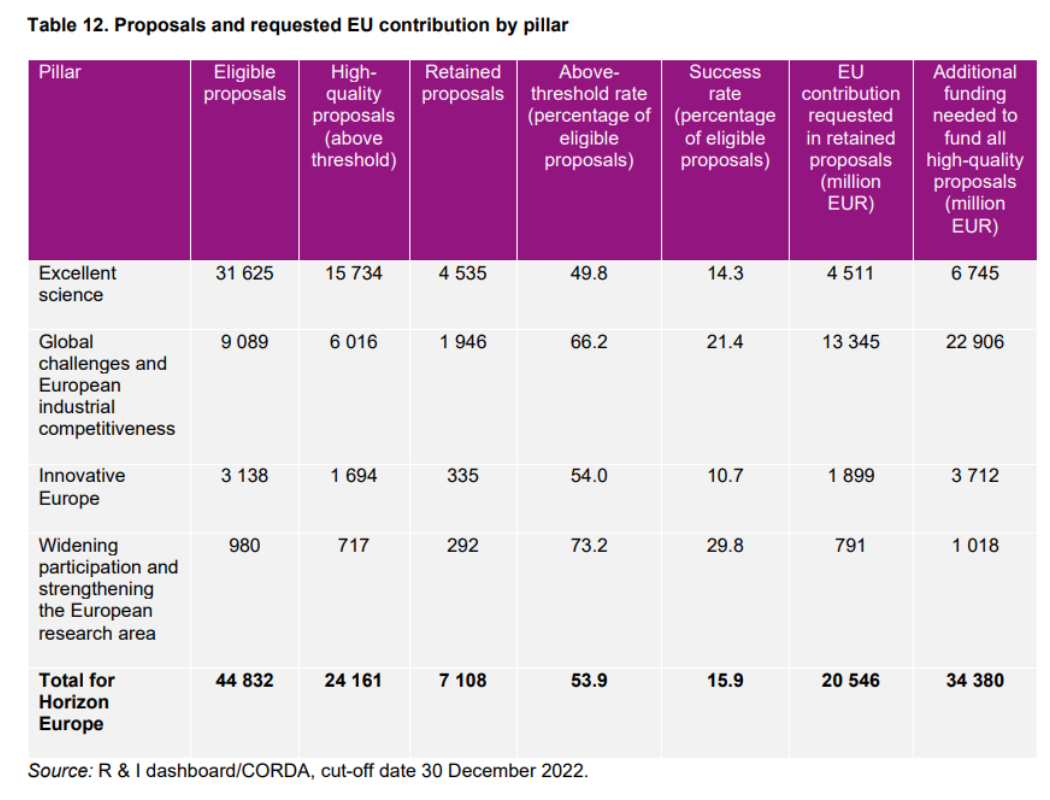Science|Business is tracking various assessments of how Widening initiatives in Horizon Europe are matching up to their objectives with a view to understanding how they should evolve

A trio of recent reports have looked into Widening initiatives in Horizon Europe that aim to close the east/west divide in research, development and innovation to assess their success and suggest how they could be improved in the future.
One of the most significant is the European Commission’s report on Horizon Europe, which is intended to lay the ground for planning the final three years of the programme between 2025 and 2027. The report includes a review of the performance of the Widening instrument over the past decade.
A key finding is that while there is still a noticeable gap in the scientific output of eastern European countries compared to the west, lagging countries improved between 2010 to 2020.
In addition, at 73.2%, the Widening instrument has the highest rate of high-quality proposals of all the Horizon Europe pillars, and the success rate of applications under Widening is also higher than other pillars, at 29.8%.

More generally, the 13 newer EU member states have nearly the same success rate in winning Horizon Europe grants as older member states, at 20.5% compared to 22.2%. This is the key statistic of the report, according to Joep Roet, deputy director at the Netherlands house for Education and Research. “In other words, the performance gap primarily stems from the [low] number of applications,” he said.
The far lower number of proposals submitted by newer member states is underlined by the fact that to date older member states have been granted €14 billion through Horizon Europe, compared to just over €1 billion for the newer members.
Less talk, more science
Another report looking at three of the Widening programme’s main instruments - twinning, teaming and ERA chairs - was published this month by Alliance4Life, a partnership of life science institutions and universities from Widening countries.
The consensus among the members is that these three instruments are working well and that twinning of institutes in the east with counterparts in the west, whether successful or not, is more likely to lead participants to apply for future projects with the connections they make.
However, one of the main takeaways from the report is the need for more focus on research activities and less on “soft money” measures, such as networking events, travel, or project reporting.
Zlatuše Novotná, head of strategic partnerships at the Central European Institute of Technology (CEITEC), a member of Alliance4Life, said the idea is for Widening partners to take a more direct leadership role in scientific collaborations.
“There are very advanced centres [in central and eastern Europe] with governance practices up to European standards,” she said. “These entities could serve as leaders for a project. We don’t need to be followers or receivers of some excellence, we want to be excellent ourselves. This is the shift in philosophy.”
Widening instruments generally rely on a non-Widening partner working with a Widening partner to bring experience, expertise and excellence to a consortium. But Novotná wants to see this requirement removed and for Widening partners to stand alone.
“This is the main idea, that we Widening partners should work together,” she said. “There is a lot of trust among our partners because we understand the problems.”
The report highlights other weaknesses such as twinning projects not being given long enough to be effective, saying a three-year project to create a network, organise training and publish results is not enough to “create a sustainable result”. It also called for the EU to work on building stronger links between institutions, member states and EU institutions, with cooperation and communication between them seen as vital for creating a strong RDI ecosystem.
Partnerships
The third report focuses on challenges Widening countries face in participating in European Partnerships that bring together private and public partners to work on RDI projects.
The report, based on a survey carried out by ERA-Learn, a support platform for R&I partnerships, found that Widening countries have fewer participants in partnerships. Nine out of 35 organisations from Widening countries do have leading roles in Partnerships but none are acting as Partnership coordinators. The main reason, according to the report, is a lack of staff.
“More efforts are needed at the national level, with the support of the [European Commission], with regards to capacity building, training and employing staff who can enhance participation of this group of countries in the [Partnerships],” the report concludes.
Another issue for Widening countries is their lack of experience in organising national consultations and choosing national priorities that are needed to develop Strategic Research and Innovation Agendas, a key document required to create a Partnership.
A solution put forward by ERA-Learn is for the European Commission to consider including Widening actions, such as those that promote Widening countries in calls for proposals, as an obligatory part of the Partnerships initiative.





 A unique international forum for public research organisations and companies to connect their external engagement with strategic interests around their R&D system.
A unique international forum for public research organisations and companies to connect their external engagement with strategic interests around their R&D system.